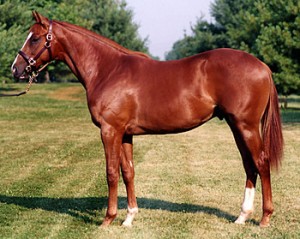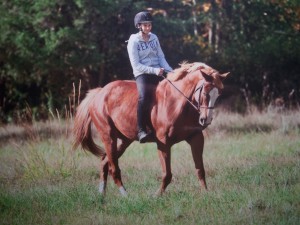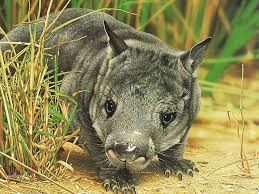

I know I promised you guys blogs on more exotic or rare animals, but I’m really missing my horse this week so I am writing about him.
My horse Baron is a Thoroughbred. Thoroughbreds are notorious for being lean, high strung, and fast. Aside from the racing discipline, they can be found in virtually every other discipline, from roping to eventing and everything in between. Though they can be very high strung, this versatile breed was bred to perform, which is why it is finds success in many different disciplines.
Thoroughbreds are descendants from Arabian horses, a compact, hot-tempered breed (originated from—you guessed—it Arabia)and were introduced around the 3rd century in England. Thoroughbreds are classified as a “hot-blooded” or “hot” horse, meaning they generally have a very high-strung temperament. They have long, slender legs, delicate heads, short backs, and broad chests. They average around 16 hands (1 hand = 4 inches) tall (measured at a point at the base of the neck called the wither). On average, this light-weight breed weighs 1000 pounds (I know, that doesn’t seem very light-weight!). Thoroughbreds can be found in generally any typical color, such as gray, bay, and chestnut. Since the breed was introduced, any registered, racing Thoroughbred is tattooed on their inner upper lip and recorded in the Jockey Club General Stud Book. The tattoos, a combination of numbers and letters, are a form of identification similar to a serial number that can be used to trace all records of the horse. Of course, this is only if the Thoroughbred ever raced, and not all Thoroughbreds race anymore. (But Baron did!) Every Thoroughbred in the northern hemisphere has a birthday on January 1 to make age more convenient for racing records and entry, but actual birth dates can be found on the horses record as well. In the southern hemisphere, Thoroughbreds turn a year older on August 1.
Baron is a bit different than most Thoroughbreds. He is still very playful (and fast!) at age 21, but his body type isn’t as lean as most. He raced when he was little and then did a variety of disciplines until I got him. He’s a prime example of a versatile Thoroughbred—he is very willing to try any discipline I ask him to do, and he is usually pretty successful at it. Of course, every type of horse, and animal for that matter, regardless of breed, has its own personality and characteristics. My blog only serves as a generalization of such species.
Thanks for reading all about my horse! 🙂

Meet Baron
























